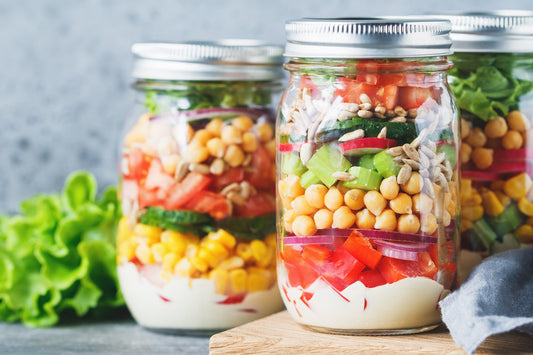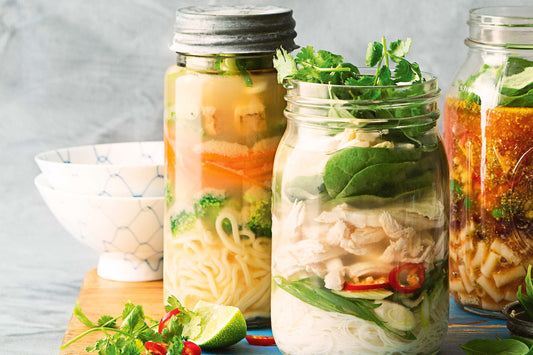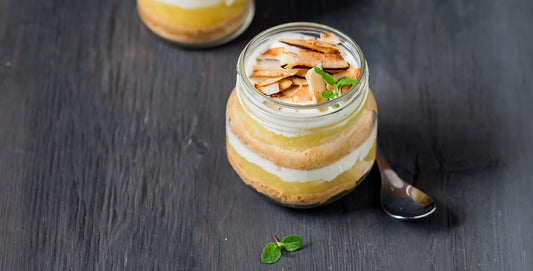Eco-packaging is also known as environmentally friendly packaging, sustainable packaging, or green packaging.
What is eco-packaging?
This type of packaging is intended to have as little environmental impact as possible. Eco-packaging is often made from recycled or biodegradable materials and has the aim to use less material and be easier to recycle than other types of packaging.
Why sustainable packaging is important?
Environmental Benefits
-
Compostable packaging
- Recyclable packaging: This type of packaging can be produced from materials that may be collected and converted into new materials. Recyclable packaging is used in a variety of industries, including printing, food & beverage, cosmetics, and so on. Recyclable packaging helps to lessen waste, and the need to extract new resources from the environment.
- Reduce waste: Because green packaging can be recycled and biodegraded, it helps to reduce the quantity of garbage released into the environment. When non-biodegradable garbage, such as plastic, is discharged into the environment, it directly damages the ecosystem, marine life, and so on.
- Reduce pollution: Reduce pollution: When waste, such as plastic, isn't properly disposed of, chemicals are released which contaminate water, soil, and air sources. Eco-friendly packaging can then be reused or distributed. they are decomposing to provide nutrients for the soil or as fertilizer. Some home compostable packaging, for example, bamboo fiber bowls and sugarcane clamshells, can breakdown into fertile soil, provide nutrients for plants, or make fertilizer.
- Reducing environmental impact: Ecologically friendly packaging is typically made with a minimum number of natural resources or using materials that are handled responsibly in order to reduce its negative effects. FSC-certified products, for example, are those created from wood and managed responsibly by the FSC organization.
Marketing and Branding Benefits
- Save money: Sustainable packaging can help businesses save money by lowering the cost of raw materials and trash disposal. Reusable and recycled products can be reused multiple times, which helps businesses save money in the long term.
- Create a positive brand image: Today's consumers are increasingly interested in environmentally responsible businesses and choose green packaging. Using eco-packaging enables businesses to demonstrate their environmental responsibilities and dedication while also gaining customer affection. Afterwards, strengthens brand loyalty among consumers.
- Increase competitiveness: As customer happiness and love increase, so does the business's competitiveness. When compared to businesses that use typical plastic packaging, the use of green packaging represents a significant competitive advantage.
- Saving shipping and storage cost: This is one of the many benefits of working with Kimecopak as an eco-packaging supplier for your business. Kimecopak offers storage and scheduled shipping options for businesses, in addition to a wide range of eco-friendly products. This helps businesses save money and time.
Examples of eco-packaging materials
Corrugated packaging
This type of material is constructed of two or more layers of paper pasted together. Corrugated paper is a material that is lightweight but strong because of the folds in the paper layers. Corrugated packaging is frequently used as secondary packaging that does not come into direct touch with the product and is for the purpose of protecting it during long-distance transportation
Mushroom packaging
This is a green packaging created from mushroom mycelium, which can be cultivated on agricultural waste items like straw or sawdust. This type of material is not widely used, but it has emerged as one of the most notable types of sustainable packaging due to its capacity to break down spontaneously.
Mushroom packaging can be used to replace plastic foam, perfect for shipping, insulation, etc.
Green Cell Foam
This is a new packaging material derived from plant-based components such as cornstarch. This product can be composted at home or in a commercial composting facility because it decomposes spontaneously when submerged in water.
Used to prevent shock and safeguard things such as food and beverages, wine, or electronic gadgets during travel.
Kraft Paper
This is a well-known and widely used material. Kraft paper is a highly durable paper created from unbleached wood pulp. Paper bags, food packaging, stickers and product labels are all examples of kraft paper packaging products.
 Challenges and Considerations when using Sustainable Food Packaging for businesses
Challenges and Considerations when using Sustainable Food Packaging for businesses
Consider the following before heading to sustainable food packaging:
Food Safety and Shelf Life
Sustainable food packaging must be capable of protecting food from contamination and deterioration while also preserving food quality and shelf life. At the same time, choose and consider package types to meet your company's needs and goals.
Compliance with Regulations
Sustainable food packaging must adhere to all applicable food safety criteria, such as PFAS and BPA indications. Businesses should be aware of applicable legislation and verify that their packaging fits all criteria.
Cost and Supply Chain Considerations
It is possible that sustainable food packaging will be more expensive than traditional packaging materials. Choose a trustworthy provider and buy in bulk to save money and prevent impacting the finances of your business.
Consumer Perception and Education with Practicality
Despite the fact that the demand for eco-packaging is growing, the price gap between regular plastic packaging and eco-friendly packaging causes many customers to opt for plastic packaging. As a result, connecting and educating customers, as well as encouraging green living trends and green options, should be brought out.
Furthermore, packing must be functional and convenient for buyers. It should also be strong enough to endure the stresses of shipment and handling.
Steps for Transitioning to Eco-Packaging
Material Selection
The first step in making the switch to eco-friendly packaging is to decide on the appropriate materials. This includes taking into account elements such as compostability, durability, and affordability. Each type of material has its own set of advantages and benefits. Consider whether your product is acceptable for home composting, commercial compostable, or recyclable packaging. Is the price of the material appropriate for the company's budget?
Redesigning Food Packaging
In this step, businesses can think about how to make the most of sustainable packaging, how to reduce unnecessary packaging, or how to come up with a custom emblem for the business as a whole.
Partnering with Suppliers
Choose a trustworthy and experienced supplier capable of providing your business with materials and accompanying certificates such as BPA or FSC.
To save money, try buying in bulk or taking advantage of discounts.
Consumer Engagement and Education
Make sure that your clients are aware of the business's green packaging by using social media announcements and promotions, for example. Through this, businesses may establish a stronger connection with customers and help them connect with the brand.
Balancing Sustainability with Practicality
When making the switch to eco-packaging, it is critical to find a balance between sustainability with practicality. The packaging must be able to protect the food product from damage during the process of shipping and handling while also being cost-effective for the business.









